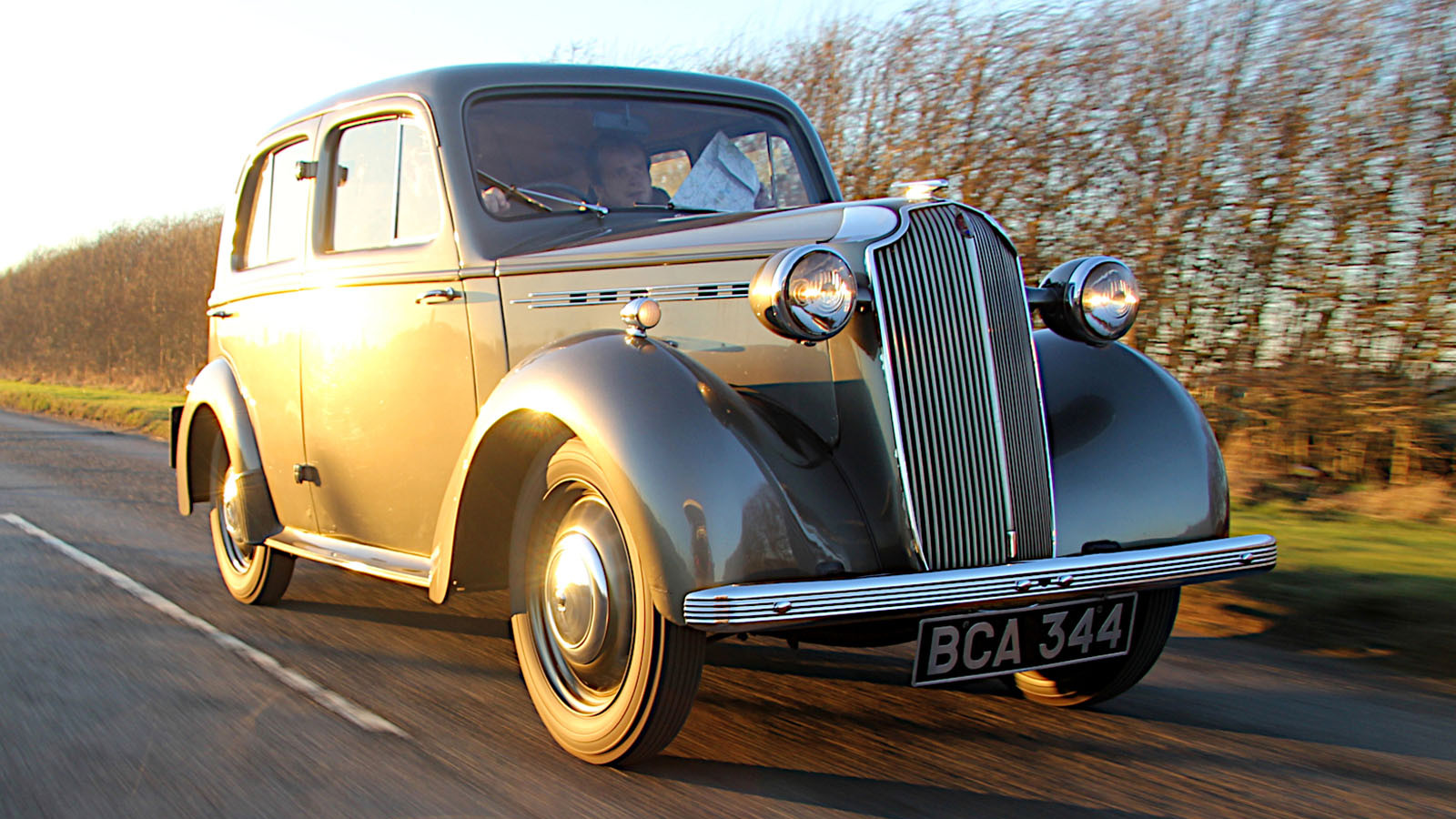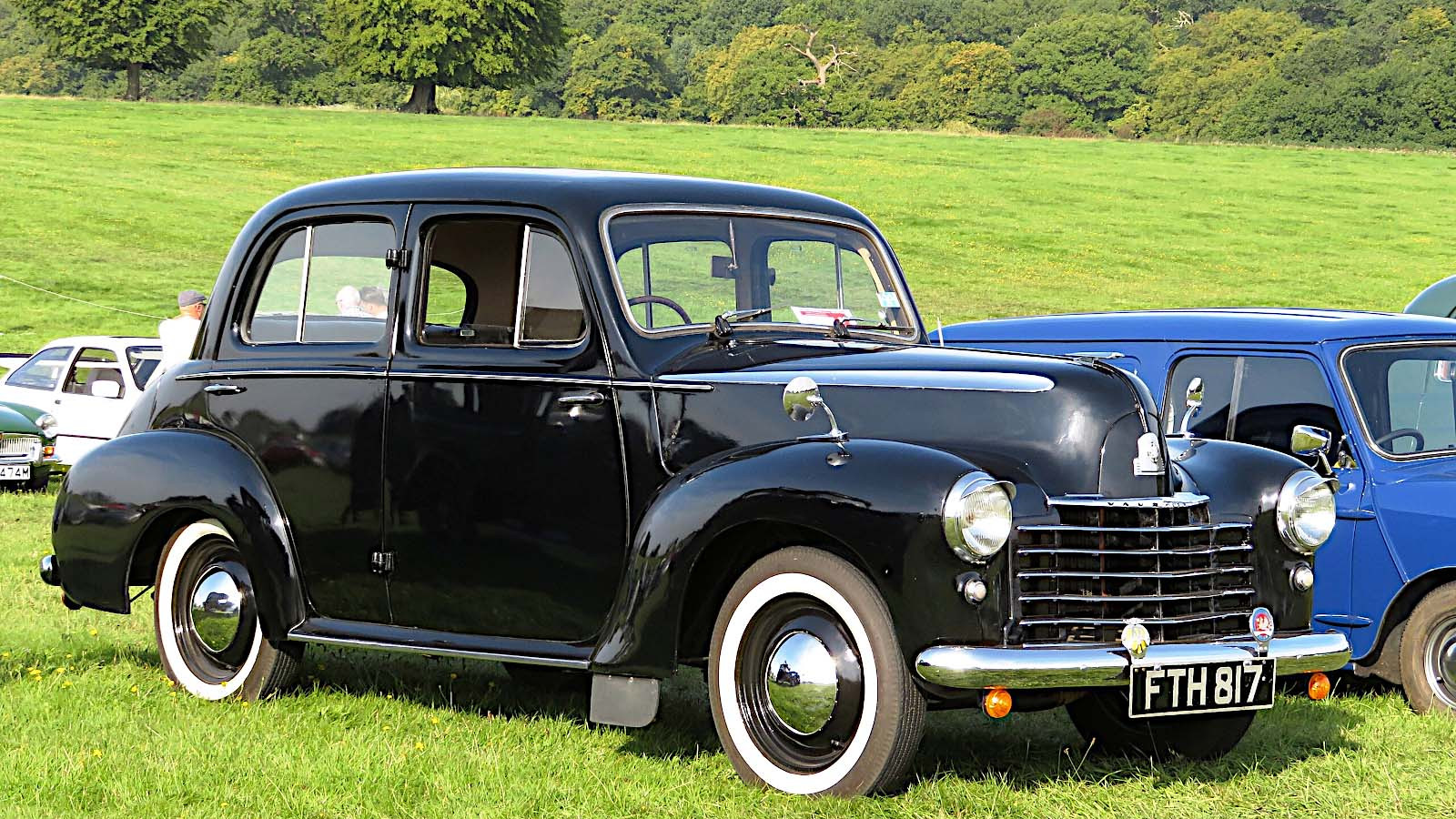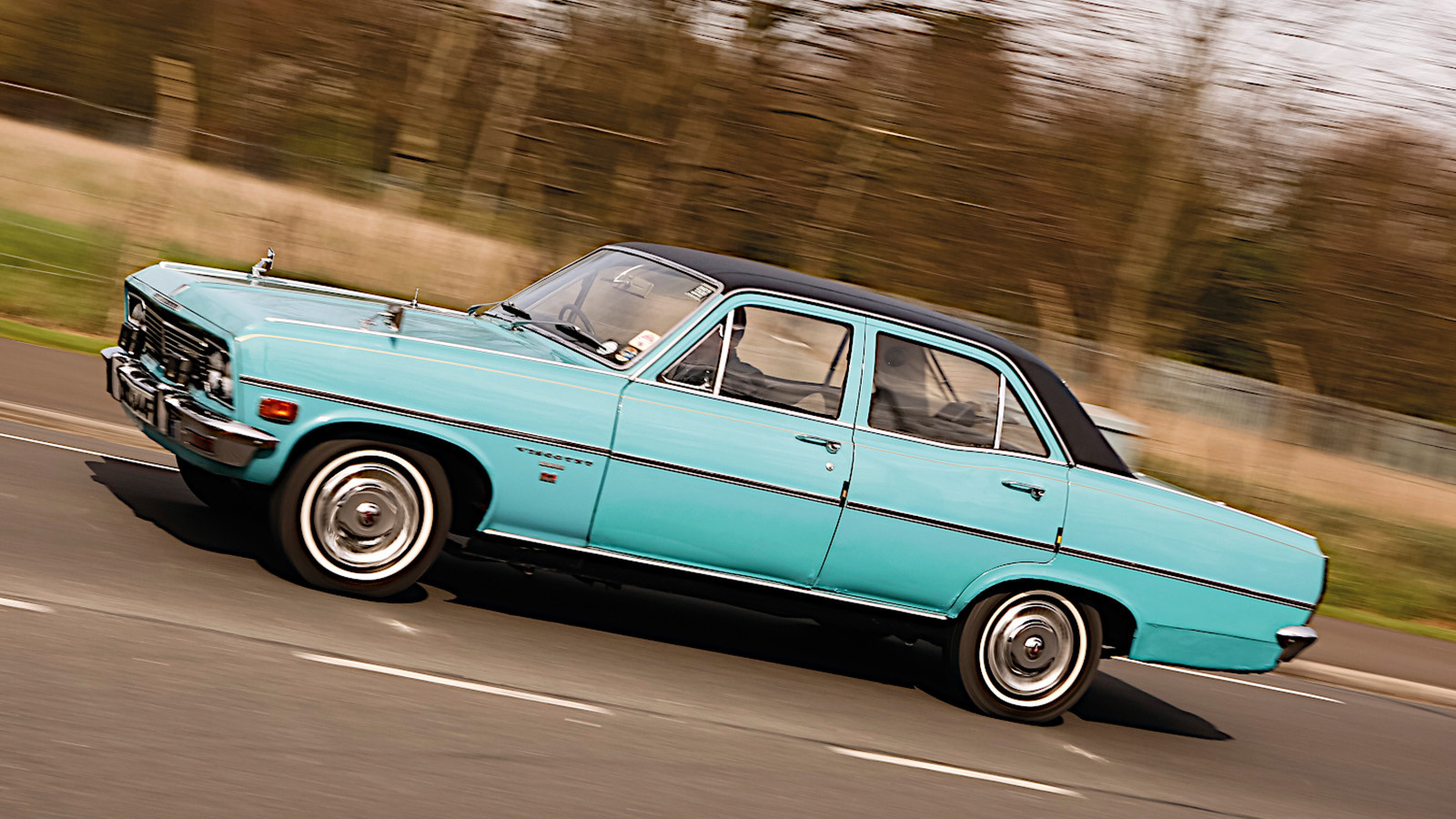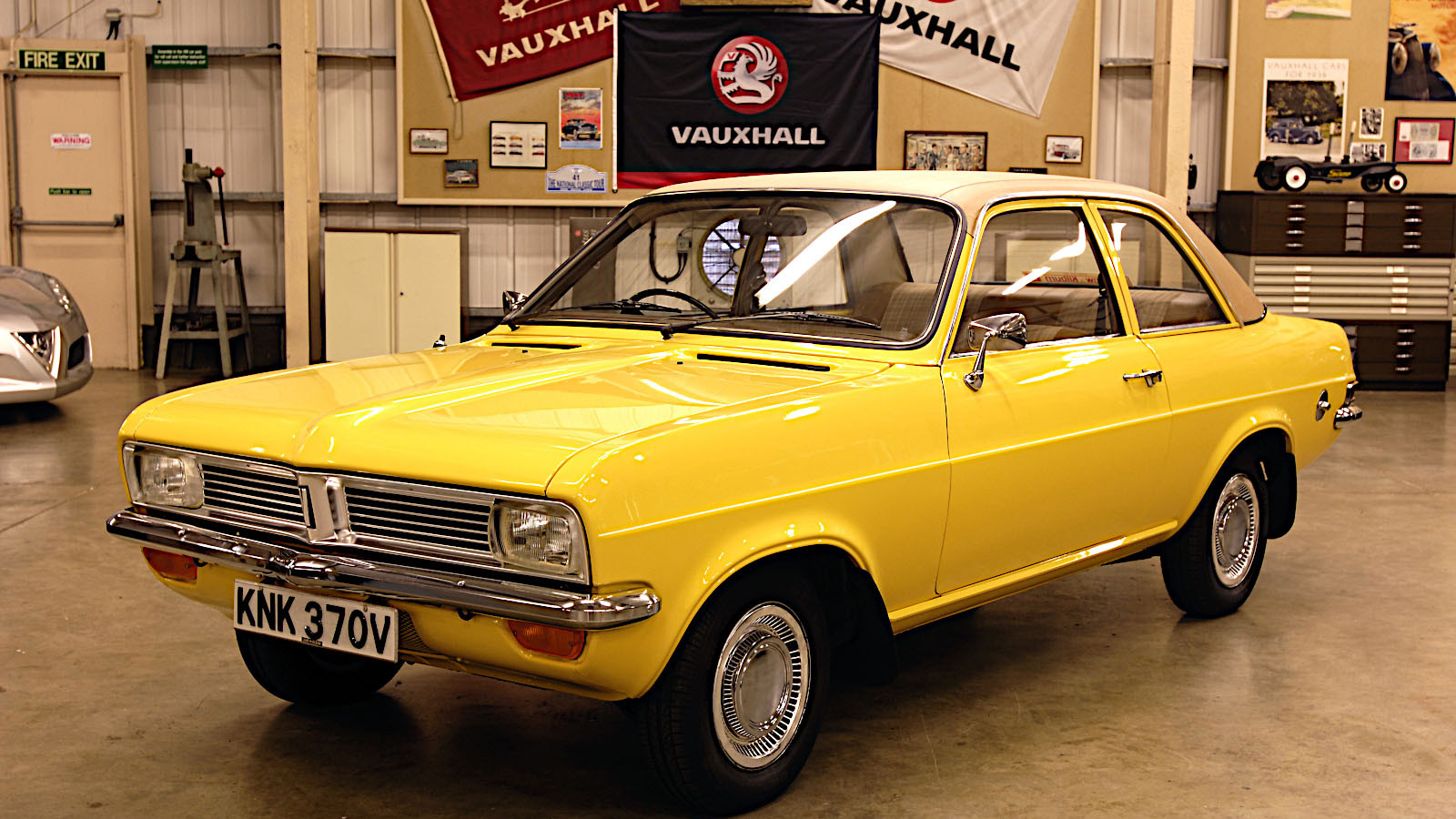-
 © Stellantis
© Stellantis -
 © Stellantis
© Stellantis -
 © Vauxhall Archive
© Vauxhall Archive -
 © Clive Barker/Creative Commons licence https://creativecommons.org/licenses/by-sa/2.0/legalcode.en
© Clive Barker/Creative Commons licence https://creativecommons.org/licenses/by-sa/2.0/legalcode.en -
 © Stellantis
© Stellantis -
 © Luc Lacey/Classic & Sports Car
© Luc Lacey/Classic & Sports Car -
 © Bonhams|Cars
© Bonhams|Cars -
 © Tony Baker/Classic & Sports Car
© Tony Baker/Classic & Sports Car -
 © Charles01/Creative Commons licence https://creativecommons.org/licenses/by-sa/3.0/legalcode.en
© Charles01/Creative Commons licence https://creativecommons.org/licenses/by-sa/3.0/legalcode.en -
 © Stellantis
© Stellantis -
 © Stellantis
© Stellantis -
 © Charles01/Creative Commons licence https://creativecommons.org/licenses/by-sa/4.0/legalcode.en
© Charles01/Creative Commons licence https://creativecommons.org/licenses/by-sa/4.0/legalcode.en -
 © Stellantis
© Stellantis -
 © Stellantis
© Stellantis -
 © Tony Baker/Classic & Sports Car
© Tony Baker/Classic & Sports Car -
 © Stellantis
© Stellantis -
 © Luc Lacey/Classic & Sports Car
© Luc Lacey/Classic & Sports Car -
 © Max Edleston/Classic & Sports Car
© Max Edleston/Classic & Sports Car -
 © Stellantis
© Stellantis -
 © Tony Baker/Classic & Sports Car
© Tony Baker/Classic & Sports Car -
 © Julian Mackie/Classic & Sports Car
© Julian Mackie/Classic & Sports Car -
 © James Mann/Classic & Sports Car
© James Mann/Classic & Sports Car -
 © Stellantis
© Stellantis -
 © David Finlay
© David Finlay -
 © Stellantis
© Stellantis -
 © Stellantis
© Stellantis
-
The end of an era
The sad news that Stellantis plans to close its manufacturing facility in Luton, in the UK, in 2025, means that the history of Vauxhall production in the Bedfordshire town will come to an end in its 120th-anniversary year.
In tribute, we’re presenting a list of 25 Luton Vauxhalls through the ages, arranged in chronological order.
There were many more than that, but we’re restricting ourselves to a selection of passenger cars, omitting any which were essentially Opels with Vauxhall badges, as was usually the case in the later years.
-
1. Vauxhall 12-14hp (1905)
Vauxhall’s first two cars, the single-cylinder 5hp and 6hp, were both manufactured at the company’s original base in Wandsworth Road, London, and so for a while was the third.
The 12-14hp was a major step forward, much larger than the earlier models and powered by a 2.4-liter, three-cylinder engine.
The first 20 examples were built in London, but the remaining 12 emerged from the new factory in Luton.
To cater for less-wealthy customers left high and dry by the cancelation of the 6hp, Vauxhall introduced the cheaper 7-9hp, which had a 1.3-liter version of the three-cylinder engine and was soon replaced by the 1.7-liter 9hp, but those cars were manufactured in London.
-
2. Vauxhall 18hp (1905)
The 18hp was the first Vauxhall built only in Luton, the first with a four-cylinder engine (measuring 3.4 liters) and the first sign that the marque was transitioning into being a supplier of premium vehicles.
A larger radiator than those of the earlier, less-powerful models was required, and its design (and that of the engine cover behind it) are believed to have been inspired by a Victorian wardrobe in the bedroom of the car’s designer, Frederick William Hodges.
Although it was by far the grandest Vauxhall yet, the 18hp was not a great success, with only 12 being built in two years.
If the caption of a contemporary photograph is to be believed, an 18hp with a landaulet body was supplied to Mr HE Baker, the Norwegian Consul General to Egypt, but this might be a confusion between Henry Baker, who had indeed been the Consul General of Norway (and Sweden and Belgium) from 1859 to 1885, and his son Henry Edward Baker, who did not hold that position.
-
3. Vauxhall A-type (1908)
The early work on what became known as the A-type was performed not by chief designer FW Hodges, who was on vacation in Egypt at the time, but by his assistant Laurence Pomeroy, still in his mid 20s.
Pomeroy drove a prototype on the Royal Automobile Club’s 2000-mile trial in 1908, in which it performed so well that Vauxhall was brought, as was later reported, ‘into the full glare of public interest’.
Powered by a splendid in-line, four-cylinder engine measuring 3.1 liters, or occasionally 3.5, the A-type was updated several times during a production run which lasted from 1908 to 1915, though one final example is reputed to have been built in 1920.
-
4. Vauxhall Prince Henry (1911)
Like Vauxhall’s A-type, the Prince Henry became famous through motorsport before it went into production at Luton.
Three cars, each fitted with a modified version of the A-type’s 3.1-liter engine, competed in the 1910 German trials named after Prince Henry of Prussia, and although none of them won an award they showed impressive speed and reliability.
The version sold to the public became available the following year, and although it was officially named the C-10 it is almost always referred to as the Prince Henry.
Discontinued in 1914, the year after the engine capacity was raised to 4 liters, this is perhaps the most famous of the Vauxhalls sold before the First World War, and has been described as Britain’s earliest sports car.
-
5. Vauxhall 30-98 (1913)
The original 30-98 (another creation of Laurence Pomeroy, who was by now Vauxhall’s works manager, a member of the Institution of Mechanical Engineers and very highly paid) caused a sensation in British hillclimbing in 1913.
Other examples followed, but full production did not begin at Luton until after the First World War.
The four-cylinder engine started out at 4.5 liters and was later reduced, for the OE version, to 4.2, though overhead rather than side valves helped raise the power output considerably despite the lower capacity.
One of the most celebrated of all Vauxhalls, the 30-98 remained on the order books until 1927.
-
6. Vauxhall 25-70 (1925)
During a period of such financial peril that collapse seemed almost inevitable, Vauxhall was developing what might be seen as its most radical car.
While it looked like a conventional large sedan of the 1920s, the 25-70 had a remarkable 3.9-liter, straight-six engine with a sleeve-valve system of the Burt-McCollum type, and if this wasn’t extraordinary enough it also had self-adjusting, four-wheel, hydraulic brakes.
The brochure spoke of ‘high luxury’, and of the car being ‘propelled as it were by a force mysteriously concealed, for no signs of it are observable’, but potential buyers were unconvinced.
The 25-70 went on sale in October 1925, a month before Vauxhall became part of the General Motors empire (as it remained for just short of 92 years), and was discontinued in the same month of 1927 after only 50 examples had been built.
-
7. Vauxhall 20-60 (1927)
The 20-60 was the first Vauxhall to go on sale after the GM takeover, though it was designed in the final years of the company’s independence.
For a while, it was also the only Vauxhall on sale at all, following the abandonment of the aging 30-98 and the disastrous 25-70.
Initially known as the R-type, it became the T-type in 1929, the T80 in 1930 and the Silent 80 in 1931, its penultimate year.
Along with the name changes there were several other developments, including a gradual increase in the capacity of the straight-six engine from 2.8 to 3.3 liters and a choice of wheelbases.
-
8. Vauxhall Cadet (1930)
Vauxhall’s first new model launched under General Motors ownership showed that the marque was moving in a new direction towards the mass market.
Most versions were priced at below £300 (compared with £485 for the most basic Silent 80), and the nearly 6000 examples of the VY were powered by a 2-liter, straight-six engine.
The VX was more or less the same car except for its 3-liter ‘six’, which produced very little extra power overall but far more in the mid-range, and was sold only in export markets because it would have been ruinously expensive to tax under the system which operated in the UK at the time.
From October 1931, the Cadet became available with synchromesh on the second and third of its three forward gears, rendering double-declutching unnecessary and leading Vauxhall to claim that it was now ‘the car that makes every driver an expert’.
-
9. Vauxhall Light Six (1933)
Encouraged by the success of the Cadet, Vauxhall went further downmarket with the Light Six, which was offered with two derivatives of the earlier car’s straight-six measuring 1.5 and 1.8 liters, and was described by then Land Speed Record holder Sir Malcolm Campbell (possibly following the contemporary practice of only saying nice things in motoring reviews) as ‘one of the best cars it has been my pleasure to handle for some considerable time’.
Perhaps more importantly, the Light Six had a starting price of just £195, which might have had some bearing on the fact that Vauxhall sold more than 23,000 examples in just 15 months.
At that point, Vauxhall substantially reworked the car (though retaining the same engines), most notably giving it independent front suspension of the ‘knee-action’ type developed by André Dubonnet.
Sales of this version slightly exceeded 20,000 in 19 months, a drop partly explained by Vauxhall having to limit production while it expanded the Luton facility in 1935.
-
10. Vauxhall 10-4 (1937)
Of all the inter-war Vauxhalls, the 10-4, or H-type, was perhaps both the most humble and the most startling.
Synchromesh and hydraulic brakes were remarkable for such a small car, if not new to Vauxhall, while the unibody construction and torsion-bar independent front suspension (largely the work of Maurice Olley, formerly of Rolls-Royce and Cadillac and later of Chevrolet) caused widespread astonishment.
With a starting price of £168 and fuel economy on the high side of 40mpg even in hard driving, it was no wonder that the 10-4 found 10,000 buyers in just five months, and it could have gone on to great things if the Luton factory hadn’t stopped producing cars in 1940, and been devoted instead to building 5000 tanks and a quarter of a million trucks for the war effort.
In peacetime, the engine had to be detuned so that it could run on low-quality gasoline, and the price shot up to £422, so it was no surprise that the 10-4 quickly faded from the scene, not to be replaced by anything comparable until the 1960s.
-
11. Vauxhall Wyvern and Velox (1948)
The first two brand-new Vauxhalls introduced after the Second World War were essentially the same car, the major difference being that the Wyvern was powered by an only slightly altered version of the 1.4-liter, in-line, four-cylinder engine used in the earlier 12-4, while the Velox had an existing straight-six whose larger bore raised its capacity from 1.8 liters to 2.3.
In each case, the body styling was highly reminiscent of the Chevrolet Fleetline, and although the General Motors connection is obvious the same could also be said of other post-war European cars including the Morris Minor, Peugeot 203 and Renault 4CV.
The models were introduced together in October 1948 and lasted only until July 1951, but in that time a remarkable 132,328 were sold, of which a little more than half (76,919) were Veloxes.
-
12. Vauxhall Wyvern, Velox and Cresta (1951)
Although they were launched only three years later, the new Wyvern and Velox (once again with four- and six-cylinder engines respectively) looked like they came from a completely different generation.
This time round, the bodies were of the now fashionable three-box, ponton style which remained unchanged for six years, though there were several detail alterations.
In 1954, Vauxhall introduced the first of several models called Cresta, which was simply a Velox with extra equipment such as whitewall tires, two-tone paintwork, an electric clock and other delights.
Total production was 345,884 units, of which the six-cylinder models accounted for around two thirds.
-
13. Vauxhall Velox and Cresta (1957)
The third Velox had clear North American influence in its styling, closely resembling the second-generation Chevrolet Bel Air which in turn looked very like the Cadillac Park Lane concept of 1954.
Once again there was a more upmarket version called the Cresta, which was so close to the Velox that it hardly seemed worth giving the two models different names.
The cars left Luton as sedans, but some were converted into station wagons by Friary Motors of Basingstoke, in the UK, and one of these (subtly different from standard specification to the extent that it is impossible to tell whether it’s a Velox or a Cresta) was built for Queen Elizabeth II.
Perhaps inevitably, given the trend which became apparent during the previous generation, all versions had six-cylinder engines, and there was no longer a four-cylinder Wyvern.
-
14. Vauxhall Victor (1957)
The last Wyvern was indirectly replaced by the first Vauxhall Victor, which was smaller than the contemporary Velox and Cresta, and powered by a 1.5-liter, four-cylinder engine.
A family resemblance to its larger stablemates was ensured by the fact that the Victor once again looked rather like the Chevrolet Bel Air, though inevitably somewhat dumpier since it was more than 2ft (610mm) shorter.
The Chevrolet connection was less apparent in the station-wagon version, the first car with this body style ever built in Luton.
Being considerably cheaper than the Velox and Cresta, the Victor naturally sold in larger numbers, 390,745 finding customers in just over four years.
-
15. Vauxhall Victor and VX4/90 (1961)
The ’61 Victor used the same 1.5-liter engine as the model it replaced (though it was enlarged to 1.6 liters in 1964) and featured more room, better rust protection, a lower center of gravity and an almost complete lack of American influence.
It was offered as both a sedan and a station wagon, and in sedan form it was also available as the VX4/90 (standing for VauXhall four-cylinder 90mph) which had a modified version of the same engine producing far more power.
The VX4/90 was much faster than the regular Victor, but it was also substantially more expensive, which no doubt explains why it represented less than 10% of the 328,640 total production figure.
-
16. Vauxhall Velox and Cresta (1962)
As it had with the Victor, Vauxhall adopted more sober styling for the next version of the Velox and its better-equipped sibling, the Cresta.
Both were powered initially by a 2.7-liter, straight-six engine, but for 1965, the final model year, this was given a capacity increase to 3.3 liters.
While every Velox and Cresta of this period left Luton as a sedan, some were converted to wagons by Martin Walter Ltd of Folkestone, in the UK, and sold through the official Vauxhall channels.
There was also a very luxurious (and very expensive) sedan conversion by Harold Radford, though it has been estimated that only around 25 of these cars were ever made.
-
17. Vauxhall Viva (1963)
Having abandoned the small-car sector by discontinuing the 10-4 a decade and a half earlier, Vauxhall returned to it with the first-generation Viva.
In a foreshadowing of what was to come, the new car was related to a contemporary Opel, the Viva and Kadett both being based on an early 1960s version of what would now be called a ‘platform’ called XP-714.
Unlike today’s platforms, this one gave the manufacturers a lot of leeway, and Vauxhall considered a transversely mounted engine and front-wheel drive before following Opel’s lead and opting for the then more conventional rear-wheel-drive layout instead.
The Viva sedan, which also became the first Vauxhall built at Ellesmere Port the year after it entered production in Luton, was on sale only until 1966, but the Bedford commercial version, highly favored by large British utility companies, remained on sale well into the 1980s.
-
18. Vauxhall Victor and VX4/90 (1964)
The 1.6-liter engine fitted to the Victor in the final year of its last generation was used throughout the next in a car which had the same wheelbase but was slightly longer overall.
As before, there were sedan and station-wagon body styles and, in sedan form only, a high-performance VX4/90 derivative.
Sales were encouraging at first, with more than 100,000 buyers in 10 months, but they slackened off a little after that.
In just under three years, 328,625 examples were built, the minority-interest VX4/90 accounting for a mere 13,449 of them.
-
19. Vauxhall Cresta and Viscount (1965)
American influence returned to the Cresta in its fourth and last generation, the car now looking somewhat like a reduced-scale Chevrolet Impala.
The 3.3-liter, straight-six engine was carried over from the previous model, at least for UK purposes, though the 2.7-liter version was brought back for export markets where either demand for good gas mileage or taxation based on engine capacity made it more suitable.
For the first and only time, Cresta was the name of the standard model – the upmarket derivative, distinguished among other things by its vinyl roof covering, was now known as the Viscount.
Intriguingly, Vauxhall experimented with putting the 7-liter, V8 engine and front-wheel-drive transmission from the Oldsmobile Toronado into a Cresta bodyshell, but that project came to an abrupt halt when the only prototype crashed heavily during testing.
-
20. Vauxhall Viva (1966)
The second Viva was larger in every dimension than the first, and had a more visually interesting body shape featuring Coke-bottle styling.
The original engine, a 1.2-liter development of the 1.1 used in the earlier Viva, was later joined by 1.6- and 2-liter examples of the new Vauxhall Slant-4.
Vivas of this generation were available as two- and four-door sedans, and as a three-door wagon.
It took less than two years for Vauxhall to build a quarter of a million second-generation Vivas, and almost exactly four to manufacture the full run of 566,391.
-
21. Vauxhall Victor, VX4/90 and Ventora (1967)
Looking dramatically more modern than any previous Vauxhall Victor, the new model featured quad headlights and Coke-bottle styling.
It was also the first production car fitted with the Slant-4 engine (once planned to be the basis of a V8, though this never got past the experimental stage), used here in 1.6- and larger-bore 2-liter forms.
The 3.3-liter straight-six was also available, and was the only engine fitted to the top-level version, which was called Ventora.
Being the most expensive variant, the Ventora (pictured) was often overlooked by customers who chose the Victor instead, though it outsold the VX4/90 by nearly two to one.
-
22. Vauxhall Viva (1970)
The third and final Viva (until the name was revived in 2015 for a Vauxhall-badged version of the Chevrolet Spark) was mechanically similar to its immediate predecessor, though the body, available in sedan, wagon and – briefly – coupe forms, was quite different.
The available engines were the old unit first seen in the original Viva, though now measuring 1.2 and eventually 1.3 liters, while the Slant-4 reappeared and was later enlarged to either 1.8 or 2.3 liters, depending on the model.
By far the longest-lived Viva of all, this one was produced until 1979, and was the last new car designed entirely by Vauxhall.
-
23. Vauxhall Firenza and Magnum (1971)
Although there were Viva coupes, most versions of the car with this body shape were called either Firenza or Magnum.
The Firenza first appeared in 1971, and two years later Vauxhall introduced a 2.3-liter version known officially as HP (for High Performance) but colloquially as the Droopsnoot, after its redesigned nose.
Flat-fronted Firenzas remained in production after that, but were renamed Magnum.
Famous racing Droopsnoots included the V8-engined Baby Bertha, a four-cylinder version developed by the Scottish SMT dealer group (which fitted two gearboxes) and Tony Davies’ Transpeed car, whose competition career has now extended over half a century.
-
24. Vauxhall Victor (1972)
Design work had already started on the new Vauxhall Victor when GM decreed that it should share many components (including the floorpan, front and rear bulkheads, front-door structures, and heater and wiper motors) with the Opel Rekord.
This was not, however, simply a case of sticking a British badge on a German car – the last Victor was predominantly a Vauxhall, even though it was related to the Opel.
The Slant-4 engine (in various capacities) and the 3.3-liter straight-six were both available, but a plan to use a 4.2-liter Holden V8 came to nothing.
At first, the cars were known as Victor, VX4/90 and Ventora, but in 1976 the straight-six was dropped and the models became known as VX1800 and VX2300.
-
25. Vauxhall Chevette (1975)
The Vauxhall Chevette is an outlier in this list because it was part of GM’s worldwide T-Car program, and more or less a redesigned version of the Opel Kadett.
It’s included here because the hatchback body style, used by both manufacturers, was the work of the designers at Luton, and because only Vauxhall created a version with the 2.3-liter Slant-4 engine.
The HS (pictured) was a homologation special developed for rallying, and it was followed by the more aggressive-looking HSR, which resembled the Black Magic concept car displayed in October 1979.
Other than those two models, all Chevettes were powered by the 1.3-liter engine originally seen in 1.1-liter form in the first Viva, and remained on the market until 1984.
We hope you enjoyed this gallery. Please click the ‘Follow’ button above for more super stories from Classic & Sports Car.
